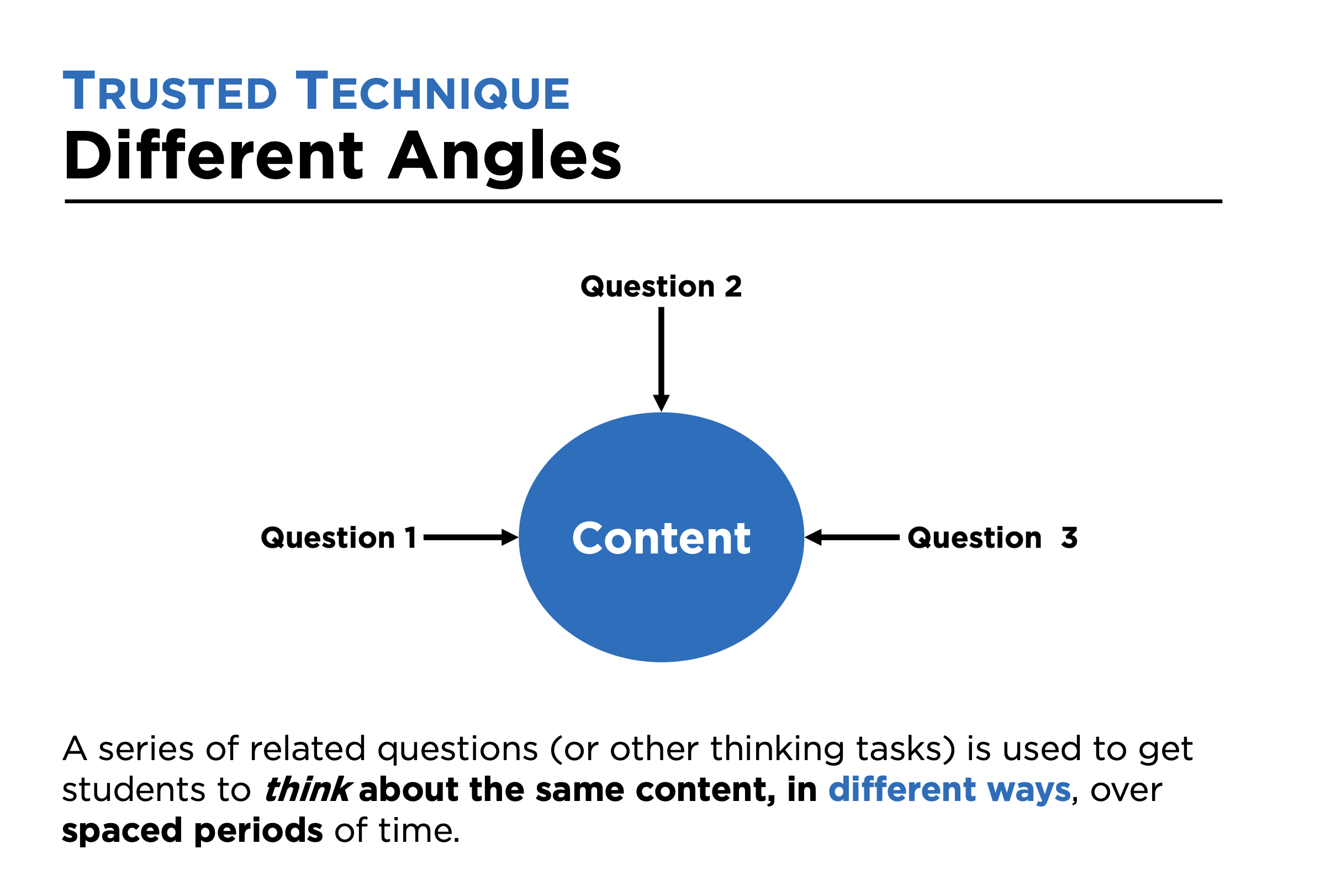Different Angles
With the Different Angles technique, you design a set of activities that deliberately encourage students to think about something specific in a variety of ways, used over spaced periods of time.
Why use this technique?
The technique taps into a core pedagogical principle highlighted by Graham Nuthall in The Hidden Lives of Learners: typically, students need to think about a concept on at least three separate occasions before it is likely to be learned.
Example
For example, if you are teaching students the structure of volcanos, you might get them to:
Angle 1: Label a blank version of a diagram a short time after this has been explained.
Angle 2: Draw the diagram from memory (for example, in the lesson plenary).
Angle 3: Explain the key features to a partner (for example, at the start of the next lesson, in Daily Review).
Angle 4: Answer a set of true/false questions (for example, in a Weekly Review activity several days later).
Angle 5: Draw the diagram from memory again (for example, in a Monthly Review activity several weeks later).
Notes
Sometimes, to change the angle of thinking task, all you need to do is ‘flip’ what you are asking students to think about. For example:
Angle 1: What is the chemical symbol for sodium? (The answer is Na.)
Angle 2: What is the name of the element with the symbol Na? (The answer is sodium.)
If time pressures in lessons are a barrier, the Different Angles technique can also be used in homework.
Focused reflection
How well do you currently use this technique?
Is it a technique you will focus on developing?
If so, what are the key features you will focus on (things to do, and not do)?

